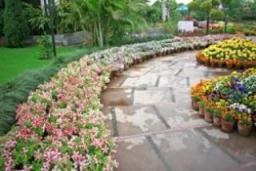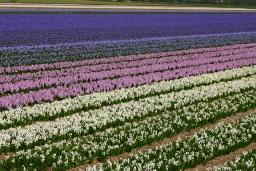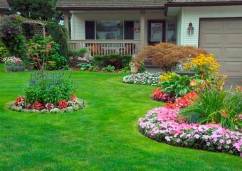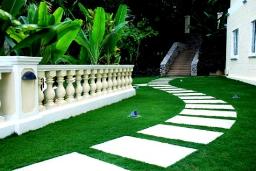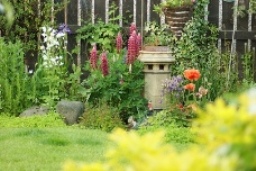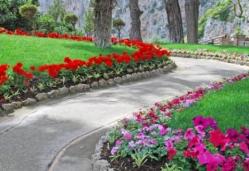The Elements
and Principles of Design
Don’t you love garden design? I know I sure do!
Here is where it all starts!
Understanding the basic elements and principles of design is an important step in creating a garden that stops traffic. Every gardener wants to have a garden that is viewed enthusiastically by passerby, and is enjoyed thoroughly by friends and family.
These elements and principles of design will help you to organize your thinking and bring order to a host of competing landscaping ideas.
The elements and principles of design are universal to all good design. Powerful, dramatic, and well-loved art, photography, sculpture and architecture all employ this thinking in one way or another. Only when an artist truly understands these elements do they dare to break the rules.
Depending upon what your overall, unifying goals are for your garden, some principles may govern the choices made, while others may not influence your design at all. To use them most effectively, you need to recognize that no one principle can be viewed as completely isolated from another.
They are conceptual ideas that can be used to refine a design through methodical review.
So learn the principles, come up with your basic plan, and then re-organize to take advantage of these principles that will set your garden apart.
The Elements and Principles of Design
(Click on Picture to learn more)
Throughout the entire design process, a designer is reviewing decisions against the design basics and rejecting those ideas that do not serve the overall desired garden effects. Often, the best effects may be obtained by simply leaving mother nature alone.
The elements and principles of garden design allow you as a garden designer to take the broader view and look at all elements of the garden design at once instead of dropping in an idea here and an idea there.
Are you excited? I am.
These elements and principles of design are just a set of tools. When you start a project at home, you don’t use every tool you have in the garage to complete it, do you? These principles are much the same. Use what applies. Discard for the moment those things that don’t. Just put them in your toolbox for later, and enjoy the process.
Take a good long look at the elements and principles of design that are presented on this page and in the linked information and see how easy it is to create your dream garden. It will fall together on its’ own!
It can be very intimidating to face a blank slate and wonder how you are going to figure out what to put where. It can even be almost impossible to figure out what you want sometimes!
Some of you are still feeling faint after all this!
NOW, are you ready to create a professional-looking garden?
Let’s go!
Ensuring through the careful selection of plants, hardscape options, garden art, and garden furnishings that every decision supports the larger, integrated goals of the designer results in good design. This overall goal of harmony must guide all decisions made.
Design principles should work together to help establish a strong sense of presence in the garden. These elements and principles of design can be played off of one another in a way that creates a playful mood in the garden, or alternatively, reinforces the formality of a design.
These elements and principles of design can also be used to great effect in the garden to create a sense of distance, to reinforce visual garden design balance, to create an illusion of space or to cause a focal point to visually advance toward the viewer. They are powerful!
Time to impress your neighbors!
Git R’ Done!

